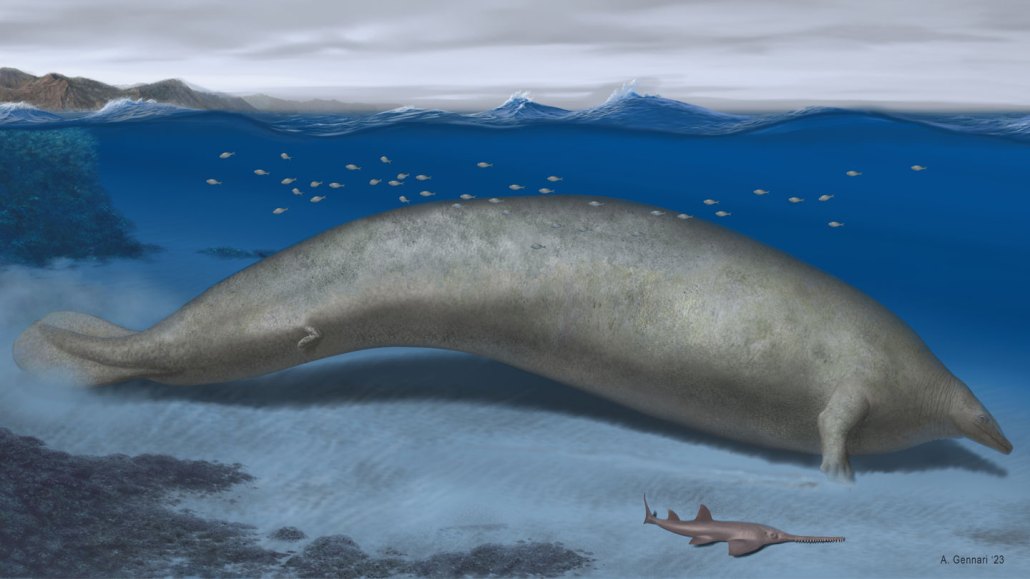A colossal ancient whale could be the heaviest animal ever known
Perucetus colossus may have tipped the scales at up to 340 metric tons

The ancient whale Perucetus colossus (illustrated) might have edged out blue whales for the title of heaviest known animal, possibly weighing up to 340 metric tons.
Alberto Gennari








